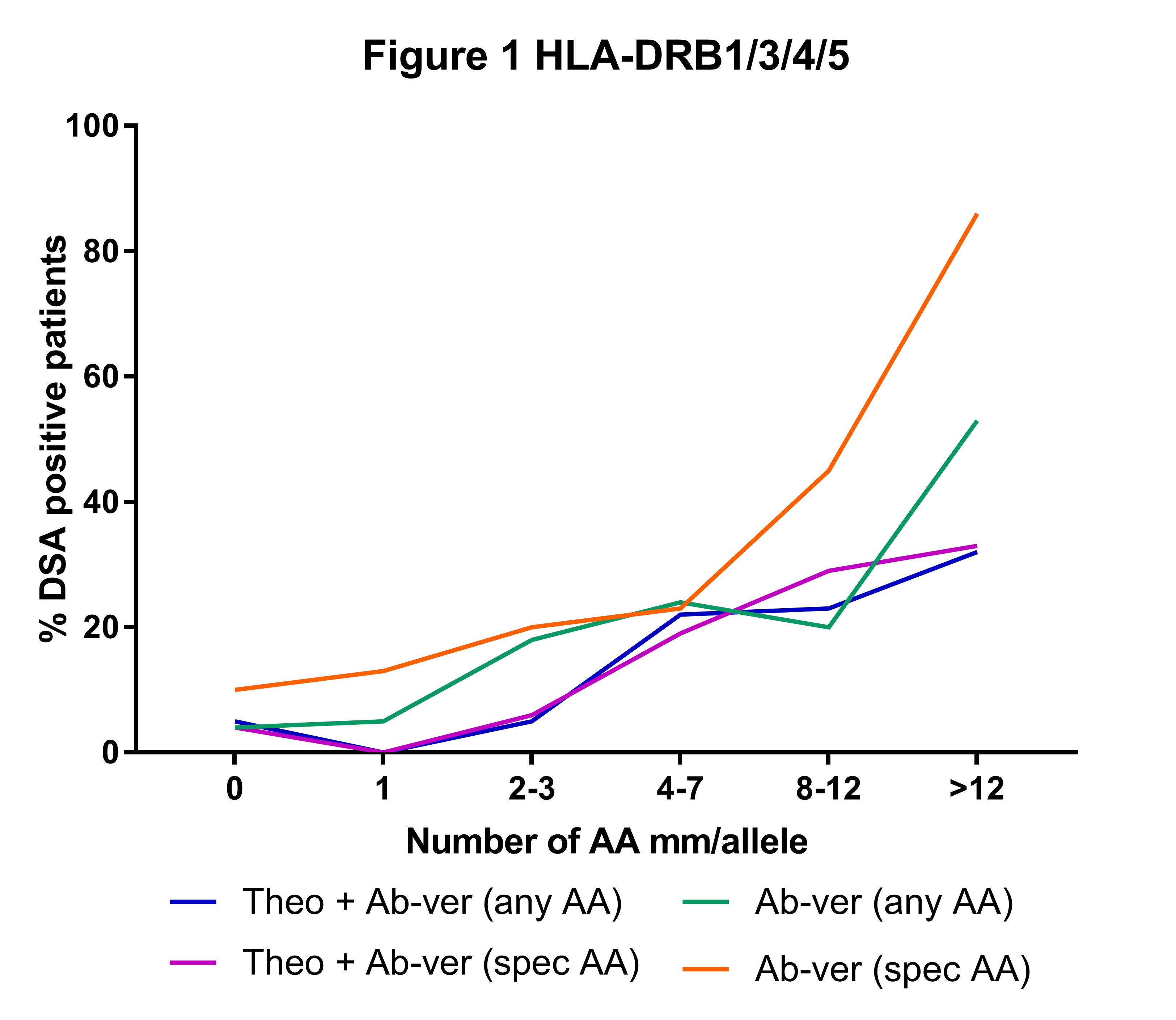A Novel Tool to Define the Immunogenicity of HLA Mismatches
Cynthia SM Kramer1, Johan Koster1, Geert W Haasnoot1, Dave L Roelen1, Frans HJ Claas1, Sebastiaan Heidt1.
1Immunohematology and Blood Transfusion, Leiden University Medical Centre, Leiden, Netherlands
In kidney transplantation, it is pivotal to prevent HLA donor specific antibody (DSA) formation, which is triggered by immunogenic epitopes present on mismatched HLA. The optimal donor can theoretically be selected by avoiding these epitope mismatches. To implement epitope matching, it is essential to define the relevant epitope mismatches between recipient and donor. Therefore, we aimed at developing and validating a tool to define amino acid mismatches on donor HLA. This tool can be used to define the immunogenicity of HLA mismatches for a large number of recipient-donor pairs.
We developed a computer algorithm containing all HLA amino acid (AA) sequences from the IPD-IMGT/HLA database and all theoretical and antibody-verified eplet AA (position and type) from the HLA Epitope Registry. The HLA input is preferably second field typing, as the HLA sequences of the recipient are compared to each mismatched HLA allele of the donor to define the number of AA mismatches. In addition, the physical properties of the AA mismatches are defined, which can be correlated to Luminex single antigen DSA formation after transplantation to define the immunogenic epitopes.
This tool and other approaches (EpVix, Cambridge AA mm score) were used to analyse 233 first kidney transplant recipient-donor pairs as part of the 17th IHIWS epitope component. Comparing the results of all approaches similar number of mismatches were observed.
For both HLA class I and class II, we found that increasing numbers of AA mismatches resulted in a higher probability of DSA formation (as indicated in figure 1).
This newly developed computer algorithm can be used to define HLA AA mismatches for a large number of recipient-donor pairs from all kind of populations and to select optimal donors in kidney transplantation. An advantage of this tool is that all HLA alleles, including rare alleles, can be analysed.

